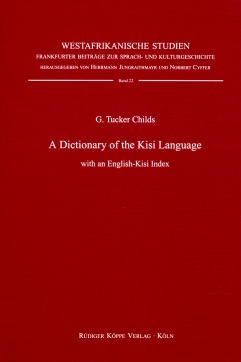


The Kisi language belongs to the (West) Atlantic languages of the Niger-Congo language family and is spoken by more than half a million people. Geographically, the language is spoken primarily in the Republic of Guinea, where it functions as one of the national languages, but also in Sierra Leone and Liberia.
The book is the first comprehensive Kisi-English dictionary. The author gathered the linguistic material during several field studies during 1983–2000. Mostly it is drawn from the southern Kisi dialect. Following a short grammatical sketch, the 6,000 lexical entries are complemented by numerous examples illustrating their use and various meanings. An attempt was made to render the meaning of the numerous ideophones as closely as possible by providing extensive English paraphrases.
The individual lexemes are complemented with grammatical information, e.g. indicating membership to one of the seven noun classes, and detailing the origin of derived verbs as part of the subcategorization information. The language has lexical and grammatical tone, and vowel length is contrastive. Both prosodic parameters are reflected in the notation of the entries. An English-Kisi index allows for easy cross-referencing.
Under these links you will find publications of the author and descriptions of further (West) Atlantic languages in monographs and paper collections:
[…] this extensive work is of major importance for anyone interested in the Kisi language and culture, but also for those involved in comparative studies of African languages.
Guillaume Segerer in Journal of African Languages and Linguistics, 26/2, 2005, 210-211
© 2025 by Rüdiger Köppe Verlag – www.koeppe.de